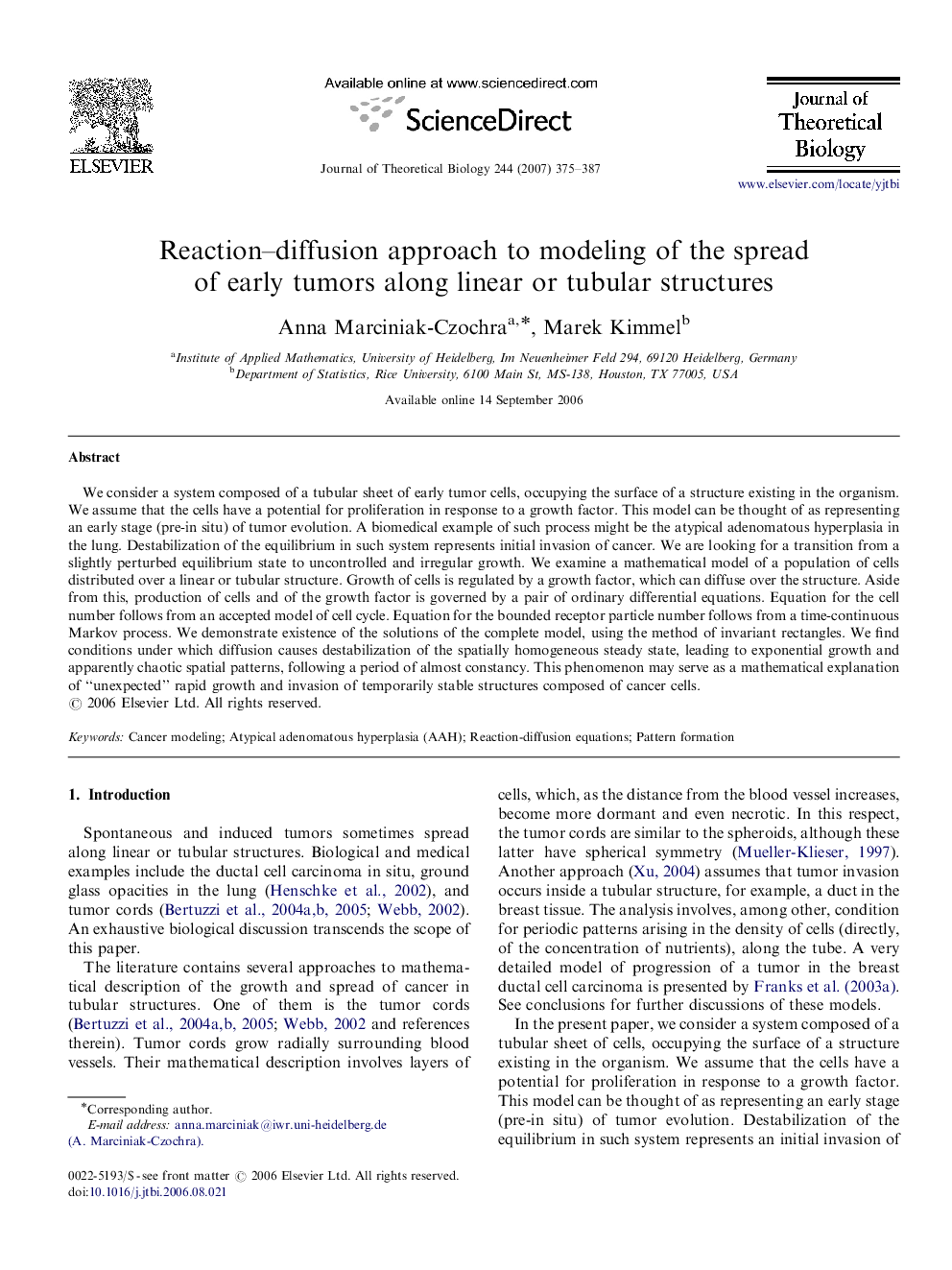| Article ID | Journal | Published Year | Pages | File Type |
|---|---|---|---|---|
| 4499245 | Journal of Theoretical Biology | 2007 | 13 Pages |
We consider a system composed of a tubular sheet of early tumor cells, occupying the surface of a structure existing in the organism. We assume that the cells have a potential for proliferation in response to a growth factor. This model can be thought of as representing an early stage (pre-in situ) of tumor evolution. A biomedical example of such process might be the atypical adenomatous hyperplasia in the lung. Destabilization of the equilibrium in such system represents initial invasion of cancer. We are looking for a transition from a slightly perturbed equilibrium state to uncontrolled and irregular growth. We examine a mathematical model of a population of cells distributed over a linear or tubular structure. Growth of cells is regulated by a growth factor, which can diffuse over the structure. Aside from this, production of cells and of the growth factor is governed by a pair of ordinary differential equations. Equation for the cell number follows from an accepted model of cell cycle. Equation for the bounded receptor particle number follows from a time-continuous Markov process. We demonstrate existence of the solutions of the complete model, using the method of invariant rectangles. We find conditions under which diffusion causes destabilization of the spatially homogeneous steady state, leading to exponential growth and apparently chaotic spatial patterns, following a period of almost constancy. This phenomenon may serve as a mathematical explanation of “unexpected” rapid growth and invasion of temporarily stable structures composed of cancer cells.
